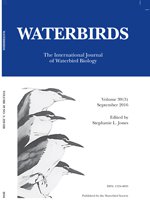Identifying parasitized nests and eggs is a prerequisite for studying conspecific brood parasitism. Previous studies on the effectiveness of egg morphology to identify parasitic eggs of different species have produced mixed results. Brood parasitism and egg measurements (length, width and weight) were monitored in Common Coot (Fulica atra; n = 85) nests. Maximum Euclidean distance was calculated for each nest. Results indicated that maximum Euclidean distance values of non-parasitized and parasitized nests were significantly different (t83 = 9.747, P < 0.01). The optimal split value of recursive partitioning analysis for Common Coot nests was 2.98 (R2 = 0.65), which can identify 93.3% non-parasitized and 88.0% parasitized nests successfully. However the most dissimilar egg in parasitized nests calculated by maximum average Euclidean distance only identified 39.3% of the parasitic eggs correctly. Egg morphology is effective for detecting conspecific brood parasitism of Common Coot nests, but is not accurate enough to determine parasitic eggs. As a result, this method should be used with caution and combined with observational or molecular biology methods.
How to translate text using browser tools
1 September 2016
The Effectiveness of Egg Morphology for Detecting Parasitized Nests and Eggs for Common Coots (Fulica atra) in Heilongjiang, China
Kun Cheng,
Cheng Zong,
Tijiu Cai,
Liya Ha
ACCESS THE FULL ARTICLE

Waterbirds
Vol. 39 • No. 3
September 2016
Vol. 39 • No. 3
September 2016
Common Coot
effectiveness
egg morphology
Fulica atra
parasitized nest
recursive partition




